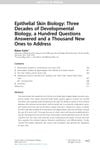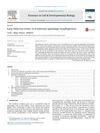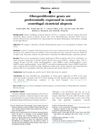Genetic and Histological Correlation Between the Musk Gland and Skin of Chinese Forest Musk Deer
October 2022
in “
bioRxiv (Cold Spring Harbor Laboratory)
”
TLDR Musk glands and skin in Chinese forest musk deer are closely related and share many genes.
The study investigated the correlation between skin tissues and musk glands in Chinese forest musk deer, focusing on the expression of Sox9, Caveolin1, and Androgen receptor (AR), which are involved in sebum secretion. Using various methods such as transcriptomic data analysis, western blotting, and immunohistochemistry, the study found that 88.24% of genes were co-expressed in both skin and musk gland tissues. The results indicated that Sox9, Caveolin1, and AR were expressed in these tissues, suggesting a strong correlation between them and highlighting their potential roles in regulating sebum secretion. The study also noted anatomical differences between adult and 4-month-old deer, with only adult males having fully developed glandular structures.







